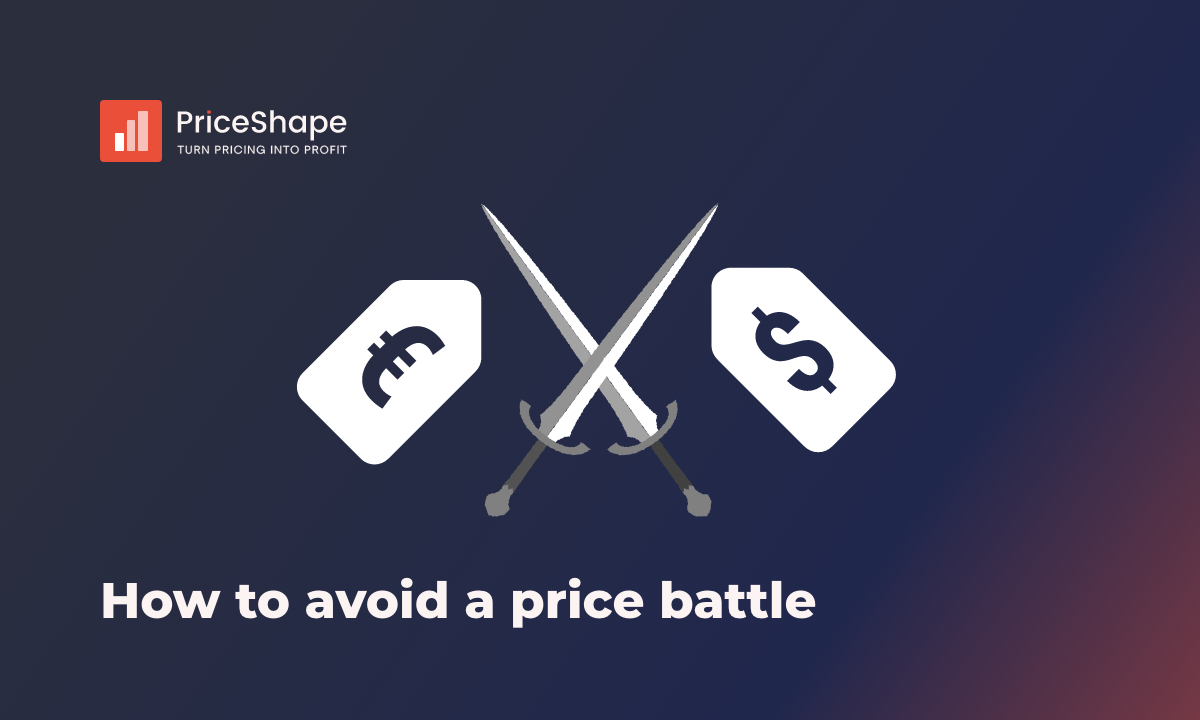How to avoid a Price Battle with your competitors
Get the right tools when being in a competitive market. Learn how to respond, ignore or accommodate a price cut done by your competitors.

“Do we always match the cheapest competitor in the market? “
“How do you properly respond to price cuts by competitors? “
“Can we afford to start a price battle, and is it worth it? “
These could be questions you are asking yourself regarding whether or not to react to competitors' prices. In this article, we will try to give you food for thought regarding responding and considering price changes when initiated by your competitors.
Price competition
It is on most business agendas and is crucial to competitiveness. How do we set competitive prices and thereby win all the consumers over? Engaging in price battles is, therefore, everyday life for many businesses, especially with the current market situation. But engaging is not always the most appropriate solution, as you almost always enter a zero-sum or negative-sum game, where benefits are negative or non-existent.
The three potential outcomes of the Pricing Game

Therefore, it is important to mention that Market Share isn’t always the key to Profitability.
Pricing
When it comes to all aspects of pricing, you can use three key steps to define the prices for your products. These steps are available in what we call the pyramid of pricing.
Pricing Pyramid
The Pyramid of Pricing includes three important steps to consider when either defining or redefining your pricing on products, product categories, or brands.
1. Define Price Window
What is your price window on this product/category? Here, we define both the price floor and the price ceiling and look at the window between these two.
Price Ceiling: Suggested Retail Price € 50,-
Price Floor: Min Profit Margin 10% Price €32
Price window : €32-50€.
2. Define Competitive Landscape
Here, it is important to ask you a lot of questions about the competitive landscape:
How is the competition on the product/ category/brand ( do you see more competitors following this price cut?) Who are the main competitors, how big are the main competitors, and how many competitors are in your price window?
3. Value Creation
When talking about value creation, a lot of questions and considerations need to be taken into account. Primarily, this point is asking yourself whether or not the price you have defined will give value to you, your customers, or your brand collaboration. So basically, asking and evaluating the negative, zero or positive outcomes mentioned above.
Respond or ignore?
Advising on whether to respond or ignore a price cut is difficult and can vary a lot depending on who you are, what your pricing strategies are, and the specific product, category, and market situation.
Therefore, we advise you to go through the Pricing Pyramid and ask yourself all the relevant questions to decide whether to respond. If it, after long and tedious talks around the table, is still unclear, we have interpreted a decision tree to help you decide on an appropriate response.
Response Tree
Interpreted from: Nagle, Thomas T., and Georg Müller. The strategy and tactics of pricing: A guide to growing more profitably. Routledge, 2017.
Please contact your Customer Success Manager to work, discuss, and implement strategies, monitor, and create responses in PriceShape.

